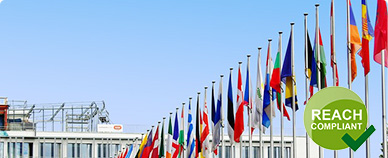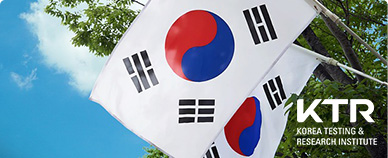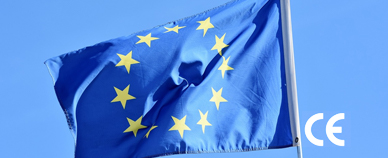Medical device CE(MDR) registration
Legal overview
MDR (Medical Devices Regulation) is the EU's regulatory requirements for medical devices, and CE registration refers to the process of complying with MDR requirements and obtaining the EU CE mark.
On May 5, 2017, the Official Journal of the European Union officially published the EU Medical Device REGULATION (EU) 2017/745 (“ MDR”) . The MDR will replace the Directives 90/385/EEC and 93/42/EEC (Active Implantable Medical Devices Directives). In accordance with the requirements of MDR Article 123, the MDR came into effect on May 26, 2017 and replaced MDD (93/42/EEC) and AIMDD (90/385/EEC) on May 26, 2020.
After the implementation of MDR, it is still possible to apply for CE certificates in accordance with MDD and AIMDD and maintain the validity of the certificates during the three-year transition period. CE certificates issued by NB during the transition period continue to be valid in accordance with Article 120 clause2, but are valid for no more than 5 years from their delivery date and expire on 27 May 2024.
MDR scope
The new MDR not only includes all products covered by MDD and AIMDD; It also covers devices specifically designed to clean, sterilize or sterilize devices, as well as products listed in Annex XVI that have no intended medical purpose, such as contact lenses, facial fillers or injections, tattoos, skin improvement and beauty products.
CE MDR registration data requirements
1. Technical Documentation:
Contains detailed information such as technical specifications, design principles, performance characteristics, manufacturing processes, operating instructions, safety performance, and clinical evaluation of medical devices. Technical documentation should be fully prepared in accordance with the requirements of the CE MDR to demonstrate that the medical device complies with the appropriate safety and performance standards.
2. Product Category:
Correctly determine the risk level and classification of medical devices, according to the provisions of the CE MDR classification, to determine the applicable audit procedures and standards.
3. Performance Evaluation report:
The performance evaluation of medical devices is a core part, including the evaluation and demonstration of product compliance with CE MDR requirements.
4. Clinical evaluation:
High-risk medical devices involving patient use require clinical evaluation to assess their safety and efficacy. Clinical evaluation report is one of the necessary data.
5. Production Facility Audit report:
Report on the audit of the manufacturer's production facilities to ensure that the corresponding production quality standards are met.
6. Biocompatibility test report:
Medical devices that involve implantation or contact with the human body need to provide the corresponding biocompatibility test report to prove their biocompatibility to the human body.
7. Material Safety Data sheet:
Provide safety data sheets for critical materials used in medical devices.
8. Adverse events and monitoring:
Provide adverse events and monitoring reports during the use of medical devices to demonstrate timely monitoring and management of potential risks.
9. Product identification:
Provide information on product labels, packaging and instructions.
10 Quality assurance system:
Ensure that medical device manufacturers establish and maintain a qualified quality management system that complies with CE MDR quality requirements.
Zhongbang has a professional and mature technical team at home and abroad, as well as in-depth strategic cooperation with institutions, serving medical device enterprises, providing high-quality customized services for enterprises, assisting enterprises in the preparation of product technical requirements, product testing, clinical evaluation data preparation and review, declaration and tracking, according to the actual situation of enterprises, the establishment of quality management system. Help enterprises from management to product one-stop service!
MDR-CE registration process and steps
1, Determine the product classification: First, determine the classification of your medical device according to the Annex section of the MDR to determine the applicable regulations and requirements.
2, Select a Notified Body: Select a notified body recognized by the European Union for product evaluation and review. You need to work with the agency and ensure that it has the appropriate scope of recognition for your product classification and requirements.
3, develop technical documents: according to the requirements of MDR, prepare technical documents in line with the requirements. Technical documentation includes technical specifications, design and manufacturing information, risk assessments and controls, clinical data, performance evaluations, etc., to demonstrate that the product meets the requirements of the MDR.
4, risk management: carry out product risk management activities, according to the requirements of MDR, risk assessment and risk control measures to develop and implement. Ensure that products are designed and manufactured in compliance with safety requirements.
5, clinical evaluation: according to the requirements of MDR, clinical evaluation is conducted, and clinical data and literature related to the product are collected and evaluated to support the safety and effectiveness of the product.
6, performance evaluation: according to the requirements of MDR, performance evaluation is carried out to evaluate whether the product meets its intended use, design requirements and performance requirements.
7, notified body evaluation: technical documents, risk management documents, clinical evaluation reports, performance evaluation, etc. are submitted to the selected notified body for evaluation and review. The notified body will evaluate your document and conduct an on-site review and testing if required.
8, CE certification issuance: If you pass the assessment of the notified body and meet all the requirements, the notified body will issue CE certification and list your product in the European Union's EC federal database.

Zhongbang is one of the earliest institutions in China to engage in compliance consulting services. It has a senior expert team composed of PhDs, Masters, and Bachelor's degrees, and has established branches in the UK, the United States, South Korea, Beijing, Shanghai, Suzhou, Fuzhou, Shenzhen, and other places, forming a global service network layout.
-
Strong technical strength:
A strong team composed of mid to senior technical personnel with professional backgrounds in chemistry, food nutrition and health, medicine, biology, toxicology, environment, and other fields
-
International service level:
A business elite team with multiple languages including English, Japanese, German, and Chinese, efficiently serving international customers
-
Rich compliance experience:
With years of experience in global product and regulatory research in multiple fields, we are able to provide comprehensive and high-level compliance consulting support to various customers
-
Localized service capabilities:
Having multiple branch offices in the UK, USA, South Korea, Beijing, Shanghai, Suzhou, Fuzhou, Shenzhen, etc., we can provide you with services nearby
Service Hotline :400-115-9001
Zhongbang Consulting (Shandong Zhongbang North Management Consulting Co., Ltd.) focuses on product registration and compliance consulting services. With its professional technology, diverse resources, and global network, we are committed to providing regulatory consulting and environmental regulation response services for pharmaceutical, chemical, consumer goods production enterprises, and large multinational corporations. To solve the environmental, health and safety laws and regulations, product quality standards, and other issues faced by enterprises in production, sales, and global trade processes.
Accumulated Customers
18,000+
Distributed in 35 countries and regions
14year
Industry experience
260+
Senior expert team
15+
Subsidiaries
300+
Collaboration Cases
Brand Cases
The choices and trust of over 18000 customers are the driving force for Zhongbang to continuously improve its services. We are willing to grow together with these excellent enterprises
Service Hotline:400-115-9001






































































 Consultation
Consultation
 400-115-9001
400-115-9001